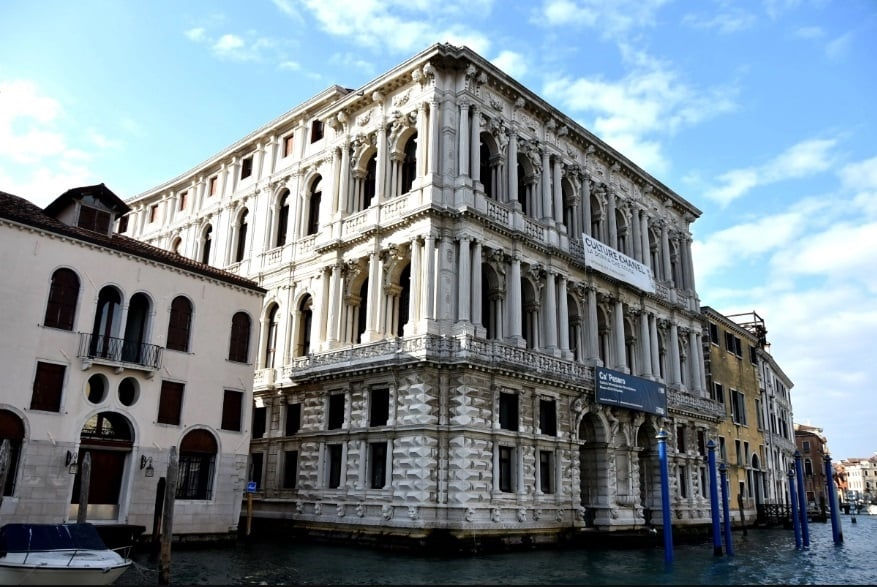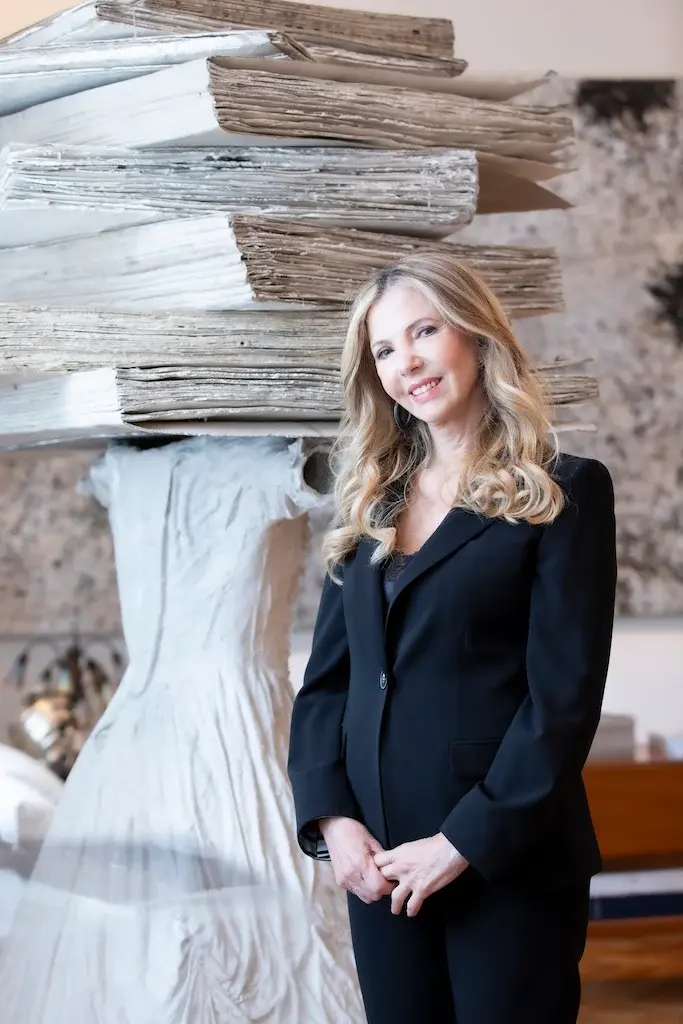Add paragraph text. Click “Edit Text” to update the font, size and more. To change and reuse text themes, go to Site Styles.

Add paragraph text. Click “Edit Text” to update the font, size and more. To change and reuse text themes, go to Site Styles.
Add paragraph text. Click “Edit Text” to update the font, size and more. To change and reuse text themes, go to Site Styles.
Add paragraph text. Click “Edit Text” to update the font, size and more. To change and reuse text themes, go to Site Styles.
Futuro Antico. Interview with Gemma De Angelis Testa
9 mag 2023
Ludovico Pratesi
From her relationship with Armando Testa to the significant donation of works to the Civic Museums of Venice, collector Gemma De Angelis Testa sees the future as a source of inspiration.

Who are your inspirational references in art?
Living in art means constantly living with inspiration. My first references date back to my adolescence, when I would immerse myself in the art catalogs we had at home, losing myself in awe among the images of works by Van Gogh, Modigliani, and Morandi.
Armando Testa was my second reference, second only in time, but not in importance. Through him, I truly understood that in work, 'Simplicity is wonderful,' but it doesn’t apply to love. During the twelve years I directed the production company Arno Film, creative collaboration was a daily occurrence; he inspired me, as I inspired him, even for some advertising campaigns.
What is the project that best represents you? Can you tell us about its genesis?
The founding of the Acacia Association is one of my most ambitious projects. Its genesis dates back to 2003, when, on my initiative, I decided to create an association with other collectors aimed at promoting Italian contemporary art and advocating for the establishment of a public museum in the city of Milan.
I like to define our approach with the phrase 'collective patronage.'
This means sharing one's resources for the benefit of the community, taking on the responsibility of public awareness, and working to preserve, protect, and promote contemporary art.
Where does the association's name come from?
The name of the association reflects that of the robust, resilient tree, capable of withstanding harsh conditions, and these qualities fully embody the spirit of our association.
Our mission finds its greatest expression through the Acacia Prize, awarded annually to Italian artists in recognition of their work.
Through these various prizes, the Association has built its own collection, still in progress, consisting of 37 works by 25 internationally renowned Italian artists.
Since 2015, an important milestone has been reached: the Acacia collection was donated to the Museo del Novecento in Milan, further confirming the synergy between public and private institutions.
One of the most significant initiatives realized by Acacia is the exhibition INVITO, a project that, coinciding with the miart fair, offers international curators and collectors the opportunity to visit exhibitions of young artists in studios, offices, or private residences.

What importance does the Genius Loci have in your work?
In my life, the domestic space has always played a fundamental role. My home carries with it countless memories and has witnessed many stories. It has always been evocative for me, both personally and professionally. I have a habit of walking around my house as if I were in a museum. I enjoy wandering through the rooms and, depending on my mood, observing my paintings. Art has given me, and continues to give me, so many emotions. I don’t believe happiness can be measured in the long term (as it consists of moments in our lives that must be appreciated individually), but if I had to measure it, I think my happiness index would be represented by the works I surround myself with daily.
How important is the past for imagining and building the future? Do you think the future can have an ancient soul?
Absolutely, it's essential. When I think about the themes of past and future, I am reminded of the exhibition curated by Germano Celant in 1997 for the 47th Venice Biennale, titled Future, Present, Past, where three different generations of artists from 1967 to 1997 engaged in dialogue. Knowing the past is fundamental for projecting oneself far ahead, because without history, there is no future. I believe artists like Ai Weiwei are a powerful testament to this, as they infuse their works with an aura of antiquity. At the core, there is not only the study and research of the past, but also the awareness of the weight that history has on us.
What advice would you give to a young person wanting to follow your path?
The advice I would give to a young person is to invest a lot of their free time in art. Reading, traveling, visiting museums, exhibitions, fairs, and engaging with gallerists and artists (when possible) are excellent foundations that can provide the tools for future connections.
In an era defined by post-truth, does the concept of the sacred still hold importance and strength?
I believe that today, the concept of the sacred is subjective and therefore varies from person to person. What I consider sacred may not be so for someone else, but it’s certainly a lively and contemporary topic that still holds great importance, especially in the era we call post-truth.
For this reason, precisely because we live in a historical period where it’s believed that everything has already been discovered and that even truth has been surpassed, we need to rediscover it, and thus revisit the concept of the sacred. In my field, the sacred has always been a fundamental concept. For me, all art is sacred, not just ancient art.
Art is a concept of faith.

How do you imagine the future? Could you give us three ideas that, in your opinion, will guide the coming years?
I am fascinated by future developments. I’m very curious about what the progress of tomorrow might be. Science, for instance, fascinates me, and discovering what the various evolutions and regressions will be in the post-pandemic era intrigues me a lot. In general, I see the future as a source of inspiration.
When I look at younger generations, I notice that today’s youth have new values, different from those of the past. They have a strong sense of freedom, similar to that of the generation of '68. They are driven by shared ideals.
Compared to '68, social issues have changed, but the spirit seems the same. Times change, and naturally, so do needs, but I believe that being united by a principle or value will definitely lead to something good.
I’m pleased to see their particular focus on environmental and ecological issues, which gives much hope for the future. In the art world, I believe that in the future, we’ll need to focus on expanding the cultural dialogue between public and private sectors. My most recent contribution to this effort was donating much of my contemporary art collection to the City of Venice, which will be on display at the Ca’ Pesaro International Gallery of Modern Art until September 17.
I hope that, on the one hand, more collectors will embrace this vision, making their collections and works accessible to a wider audience, and on the other hand, that institutions will increasingly provide museum spaces and venues where collectors can exhibit their works.